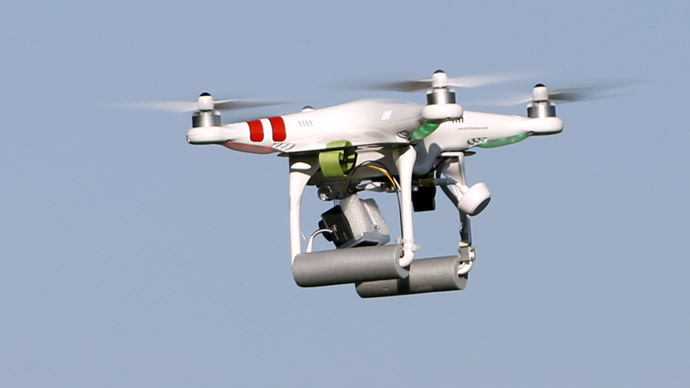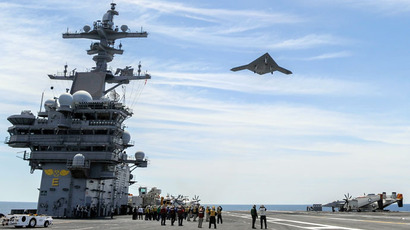‘Learning on the fly’: Brain-inspired neuromorphic chip tested in prototype drone

Scientists, backed by the Pentagon’s research agency DARPA, have tested a smart chip mimicking human brain functions in robots. For the trial, the chip designed to learn new skills and one day replace acquire human reasoning was installed on a tiny drone.
HRL Laboratories' Center for Neural and Emergent Systems on behalf of the he Defense Advanced Research Projects Agency (DARPA) has just tested a tiny drone with a prototype neuromorphic chip, MIT's Technology Review reports.
The prototype, with just only 576 silicon neurons, was analyzing and responding to data gathered by optical, ultrasound, and infrared sensors of the drone as it was flying between test rooms and automatically reprogramming itself.
According to the MIT Technology Review, the 100 gram drone was flying in 3 different rooms and experienced “the unique pattern of incoming sensor data from the walls, furniture, and other objects caused a pattern of electrical activity in the neurons that the chip had never experienced before.” That enabled the chip to learn the layout of the room and act accordingly next time the drone visited it.
“This shows it is possible to do learning literally on the fly, while under very strict size, weight, and power constraints,” said Narayan Srinivasa, who leads HRL’s Center for Neural and Emergent Systems. He also says that big multinationals like the General Motors and Boeing, are considering commercializing the technology.
A Silicon Valley firm, Aerovironment, has built the prototype drone for the DoD to be six inches square and only 93 grams including the battery. The chip itself weighs in just 18 grams and uses 50 milliwatts of power.
The new drone and the chip have been developed through a project called Systems of Neuromorphic Adaptive Plastic Scalable Electronics (SyNAPSE), a DARPA run program that aims to mimic biological brain activity in robots. In the nervous system, a synapse is a structure that permits a neuron (or nerve cell) to pass an electrical or chemical signal to another cell.
SyNAPSE is being developed in collaboration with HRL Laboratories, Hewlett-Packard, and IBM Research. Starting November 2008, the IBM team were granted over $42 million by DARPA while HRL was given $34.5 million.














